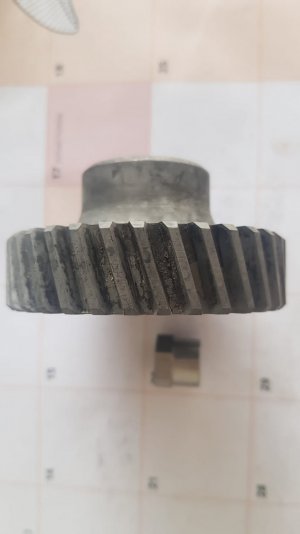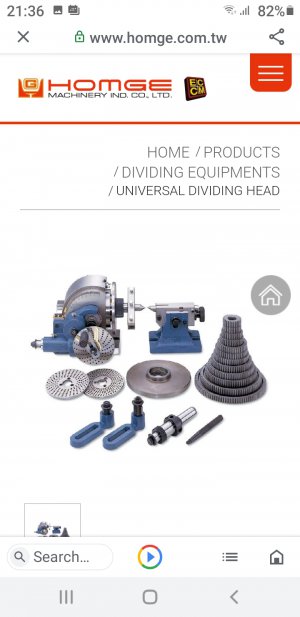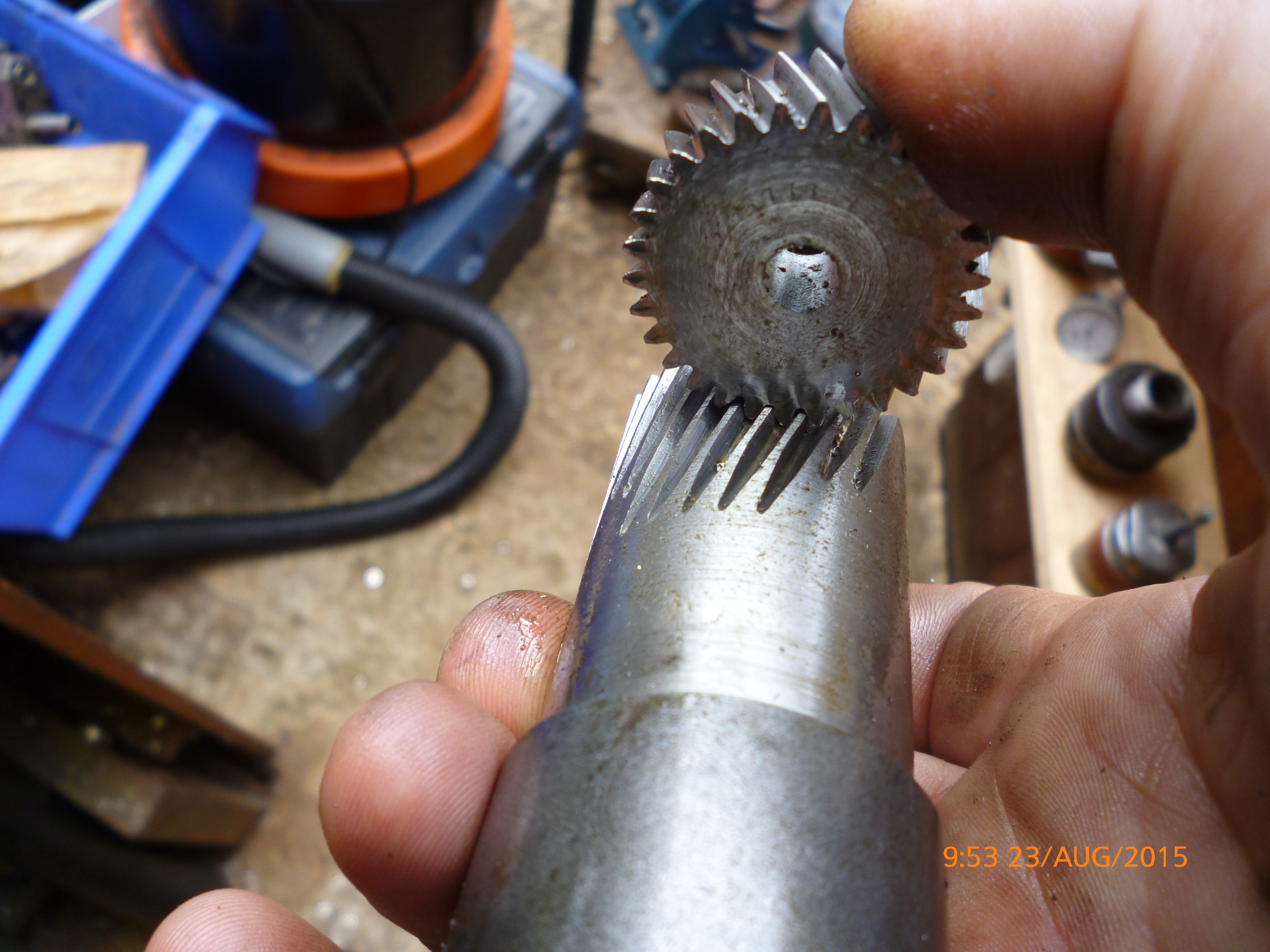In my method, the spiral angle is measured from the centerline of the old gear, say, it measures 57 degrees, the formula to calculate the lead in inches per revolution is: Lead= the circumference of the part (where the angle was measured), divided by the tangent of the angle as measured. The lead is then looked up in a handbook such as the Brown & Sharpe milling book or Machinery's Handbook in a table of leads and the appropriate change gears are selected and mounted on the machine and dividing head. Most all dividing heads are in the 40:1 ratio, ditto the tables.
As an example, one job I did was a gear that was 3.863 in diameter and measured as approximately a 57 degree spiral with the centerline. The 3.863 diameter X Pi = 12.136 divided by the tangent of 57 degrees (1.5398) = 7.881 lead. Looking in the table of leads, the nearest lead is 7.883 and gears listed are: gear on worm (dividing head) 86 tooth, first gear on stud 48 T, second gear on stud 44T, table screw gear 100t.
Spiral gear cutter selection; From machinery's handbook, 2nd edition pg216, c 1914.
Divide the actual number of teeth by the cube of the cosine of the tooth angle; the quotient will equal the number of teeth to select the cutter number. As the angle increases the cutter number is smaller. This for USA cutters, for foreign made cutters., the cutter number could be larger.




